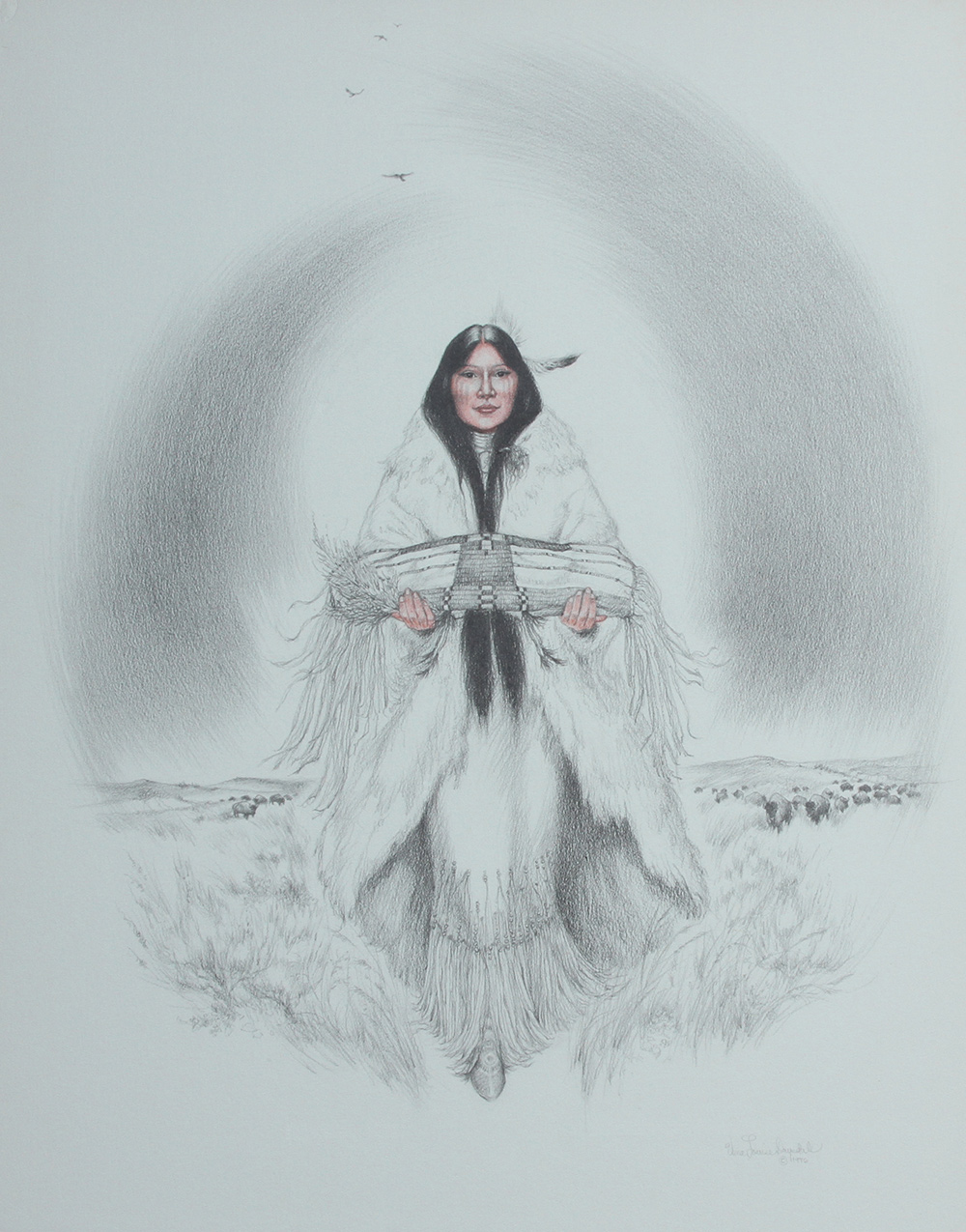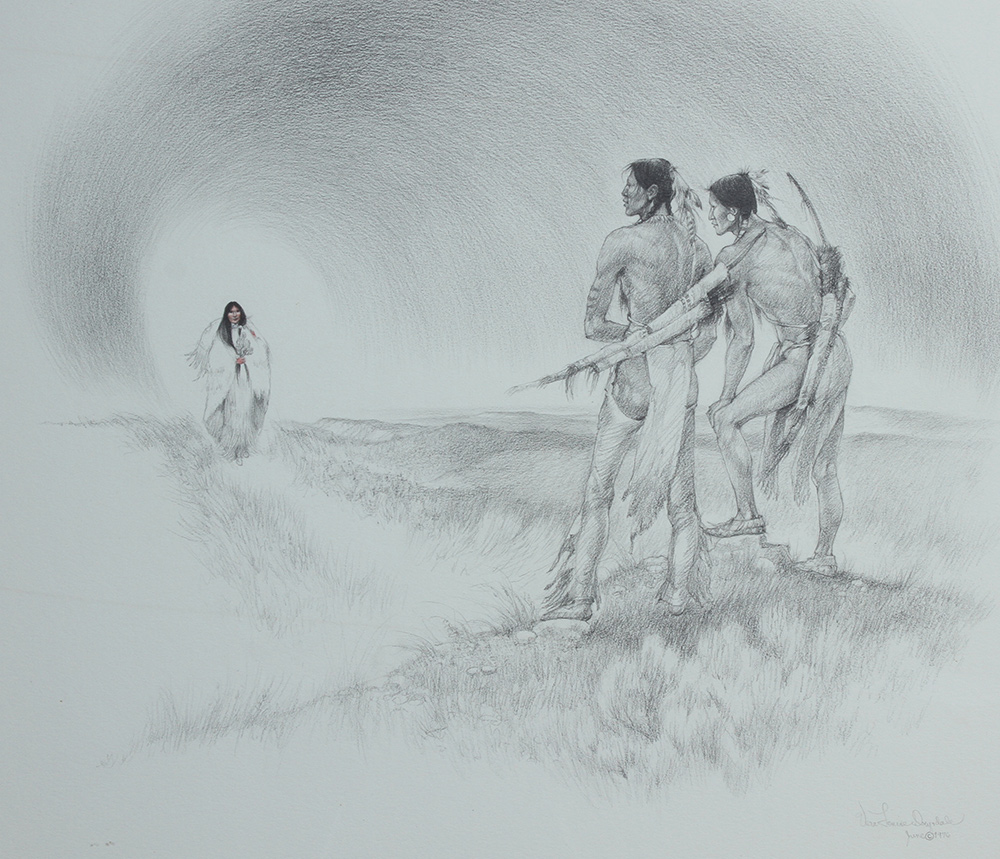There is no common expression for the color placement. It is found that the color placement will vary based on individual tribal customs.
East (Yellow) – Wiyóhiŋyaŋpata
The direction from which the sun comes. Light dawns in the morning and spreads over the earth. This is the beginning of a new day. It is also the beginning of understanding because light helps us see things the way they really are. On a deeper level, east stands for the wisdom helping people live good lives. Traditional people rise in the morning to pray, facing the dawn, asking God for wisdom and understanding.
South (White) – Itókaǧata
Because the southern sky is when the sun is at its highest, this direction stands for warmth and growing. The sun’s rays are powerful in drawing life from the earth. It is said that life of all things comes from the south. Also, warm and pleasant winds come from the south. When people pass into the spirit world, they travel the Milky Way’s path back to the south — returning from where they came.
West (Black) – Wiyóȟpeyata
To the west, the sunset, and the day ends. For this reason, the west signifies the end of life. As Black Elk says, “… toward the setting sun of his life.” The great Thunderbird lives in the west and sends thunder and rain from its direction. For this reason, the west is also the source of water: rain, lakes, streams and rivers. Nothing can live without water, so the west is vital.
North (Red) – Wazíyata
North brings the cold, harsh winds of the winter season. These winds are cleansing. They cause the leaves to fall and the earth to rest under a blanket of snow. If someone has the ability to face these winds like the buffalo with its head into the storm, they have learned patience and endurance. Generally, this direction stands for hardships and discomfort. Therefore, north represents the trials people must endure and the cleansing they must undergo.
Source: Adapted from Lakota Life by Ron Zeilinger

